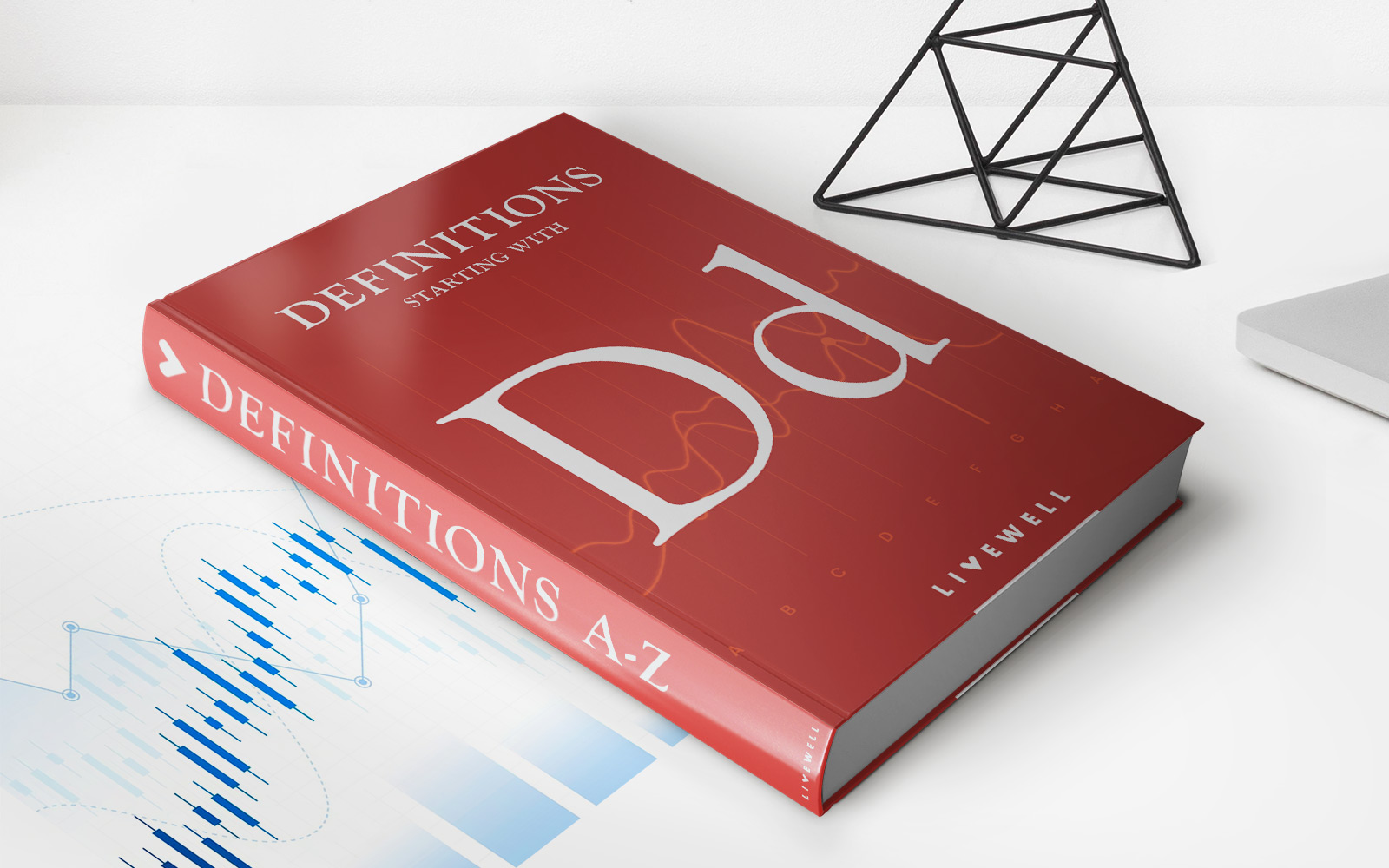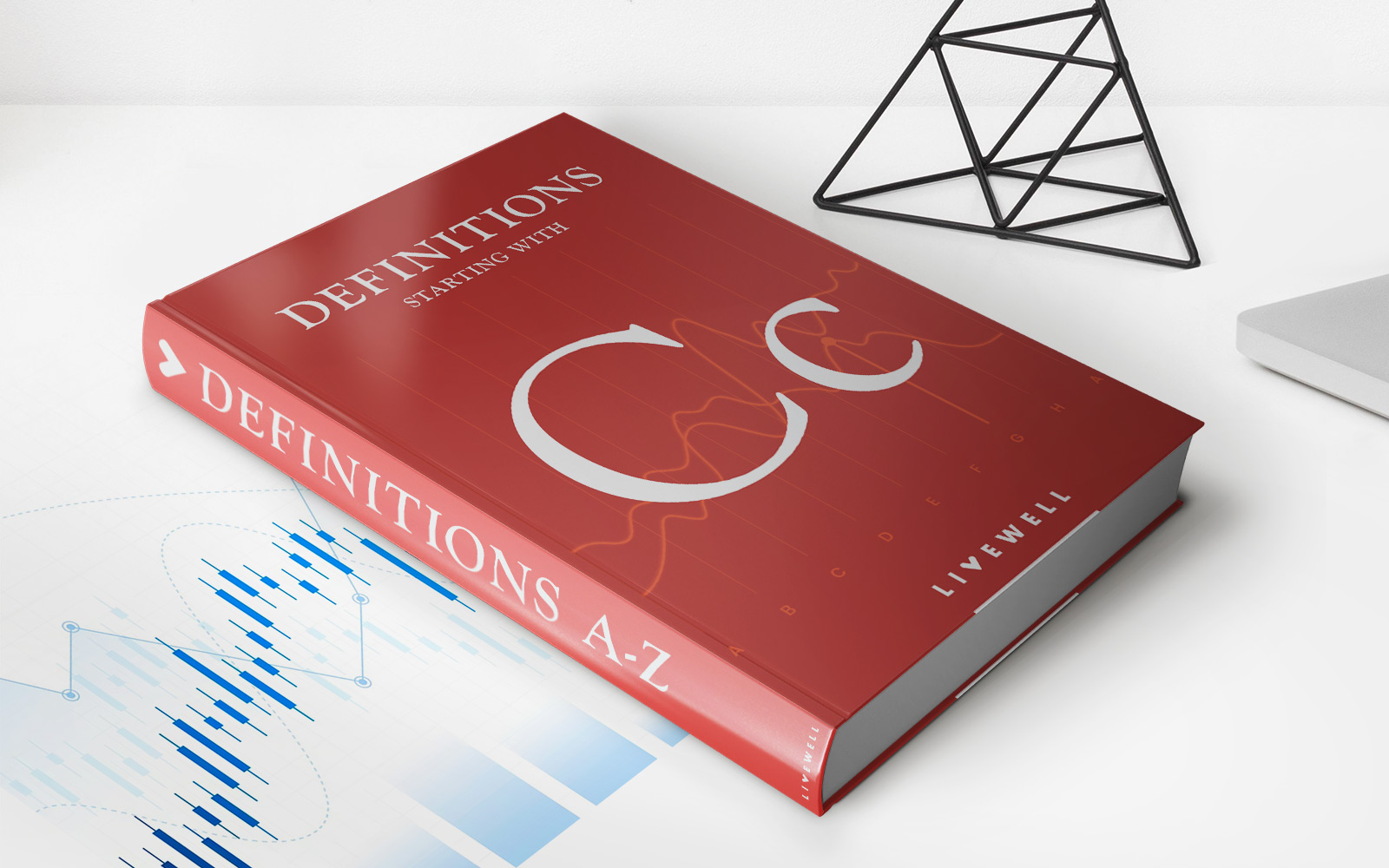

Finance
What Is A Firm’s Capital Structure?
Published: December 24, 2023
Learn about a firm's capital structure in finance and how it impacts its financial health, risk, and profitability. Gain insights into the different components and strategies for optimal capital allocation.
(Many of the links in this article redirect to a specific reviewed product. Your purchase of these products through affiliate links helps to generate commission for LiveWell, at no extra cost. Learn more)
Table of Contents
Introduction
In the world of finance, a firm’s capital structure refers to how it finances its operations and investments through a combination of debt and equity. Finding the right balance between these two sources of funding is crucial for the long-term sustainability and success of a company. Understanding capital structure is essential for both investors and business owners, as it can significantly impact a firm’s profitability, risk, and overall value.
Capital structure determines the mix of debt and equity that a company employs to finance its assets, such as buildings, machinery, and inventory. Debt financing involves borrowing money from external sources, such as banks or bondholders, with a promise to repay the principal amount along with interest over a specified period of time. On the other hand, equity financing refers to raising funds by selling ownership shares in the company, either to individual investors or through public offerings.
The capital structure decision is not a one-size-fits-all approach. Every company needs to evaluate its unique financial situation, industry dynamics, and growth objectives to determine the most optimal way to raise capital. By striking the right balance between debt and equity, a firm can reduce its overall financing costs, maximize its return on investment, and minimize its financial risk.
Throughout this article, we will delve deeper into the concept of capital structure and explore its importance, factors influencing it, the components involved, the trade-offs between debt and equity financing, the notion of optimal capital structure, and how these decisions impact the value of a firm. By gaining a clear understanding of these concepts, you will be better equipped to make informed financial decisions and navigate the complex world of corporate finance.
Definition of Capital Structure
The capital structure of a firm refers to the way it finances its operations and investments through a mix of debt and equity. It represents the combination of sources of funding that a company utilizes to acquire and maintain its assets, such as buildings, equipment, and inventory.
Capital structure typically consists of two main components:
- Debt Financing: Debt financing involves borrowing money from external sources, such as banks, financial institutions, or bondholders. When a company takes on debt, it issues bonds or takes out loans, with the obligation to repay the principal amount along with interest over a specified period of time. Debt providers have a legal claim on the firm’s assets and may have the right to seize those assets in the event of default.
- Equity Financing: Equity financing, on the other hand, involves raising funds by selling ownership shares in the company. This can be done through private placements to individual investors or through public offerings on the stock market. Equity investors become shareholders in the company and have a claim on the company’s profits and assets. Unlike debt financing, equity financing does not involve a fixed repayment schedule or the obligation to pay interest.
The proportion of debt and equity in a company’s capital structure can vary depending on factors such as the industry, the stage of business growth, and the management’s risk tolerance. A capital structure with a higher proportion of debt is said to be more leveraged, while a capital structure with a higher proportion of equity is considered less leveraged.
It is important to note that the capital structure decision is not a one-time event but an ongoing process that can change over time. As a firm’s financial needs and circumstances evolve, it may decide to raise additional capital or adjust the mix of debt and equity to optimize its financing costs and risk profile.
Importance of Capital Structure
Capital structure plays a crucial role in the financial management of a firm. It impacts the company’s ability to generate profits, manage risk, and create value for shareholders. Here are some key reasons why capital structure is important:
- Cost of Capital: The composition of a firm’s capital structure directly affects its cost of capital. Debt financing generally has a lower cost (interest expense) compared to equity financing (dividends and capital gains). By strategically utilizing debt and equity, a company can optimize its capital structure to minimize its overall financing costs and improve profitability.
- Risk Management: Capital structure also plays a vital role in managing a company’s financial risk. By diversifying the sources of funding through a mix of debt and equity, a business can spread risk and avoid overreliance on a single type of financing. Additionally, a well-balanced capital structure can help mitigate the risk of financial distress and bankruptcy.
- Flexibility: A sound capital structure provides businesses with greater flexibility to adapt to changing market conditions and growth opportunities. By having access to different sources of funding, such as debt or equity markets, a company can raise capital more easily to finance expansions, acquisitions, or research and development initiatives.
- Ownership and Control: The choice between debt and equity financing can impact the ownership and control of the firm. Equity financing allows companies to raise capital without incurring debt, but it dilutes existing shareholders’ ownership. On the other hand, debt financing allows companies to maintain control but involves interest payments and potential restrictions imposed by lenders.
- Investor Perception: The capital structure can influence how investors perceive a company. A solid and well-balanced capital structure can inspire confidence in potential investors and lenders, thereby increasing the company’s access to future funding. Conversely, an overly leveraged or undercapitalized structure may deter investors and limit growth opportunities.
It is important for businesses to regularly assess and adjust their capital structure to align with their financial goals, market conditions, and industry dynamics. By carefully evaluating the factors mentioned above and finding an optimal capital structure, companies can improve their financial performance, reduce risk, and enhance shareholder value.
Factors Influencing Capital Structure
When determining the optimal capital structure, businesses need to consider various factors that can influence their financing decisions. These factors can be broadly categorized into internal and external influences. Let’s explore some key factors that play a role in shaping a company’s capital structure:
- Business Risk: The level of risk inherent in a company’s operations is a crucial determinant of its capital structure. Businesses operating in volatile or cyclical industries may prefer a conservative capital structure with a larger proportion of equity to mitigate the financial risk. Conversely, stable and low-risk industries may allow for more leverage through debt financing.
- Profitability: A company’s profitability and earnings stability are important considerations when determining capital structure. Highly profitable firms with stable cash flows are better positioned to service debt payments and can therefore tolerate higher levels of debt. Conversely, companies with inconsistent earnings or lower profitability may opt for a more equity-focused financing approach.
- Size of the Company: The size of a company can impact its capital structure decisions. Larger companies often have easier access to capital markets and can negotiate favorable borrowing terms due to their scale and market presence. Smaller businesses, however, may face higher borrowing costs and rely more on equity financing.
- Growth Opportunities: The growth prospects of a company also influence its capital structure. Businesses with significant growth opportunities may choose to finance their expansion through equity financing to avoid the burden of heavy debt repayments and maintain flexibility. Alternatively, mature companies with stable operations may prefer debt financing to take advantage of tax benefits and lower interest rates.
- Financial Market Conditions: The prevailing conditions in the financial markets can impact a company’s capital structure decisions. Interest rates, availability of credit, and investor appetite for certain types of securities can influence the cost and availability of debt and equity financing. Companies need to assess the market conditions to determine the most optimal and cost-effective capital structure.
It is important to note that these factors are not independent of each other and may interact in a complex manner. Companies must carefully evaluate their unique circumstances and consider multiple factors simultaneously to arrive at the most suitable capital structure that aligns with their financial objectives, risk appetite, and growth plans.
Components of Capital Structure
A company’s capital structure consists of several components that collectively determine its financing mix. Let’s examine the key components that make up a firm’s capital structure:
- Equity Capital: Equity capital represents the ownership stake in a company held by its shareholders. It is raised through the issuance of common stock or preference shares. Equity capital holders have a residual claim on the company’s assets and earnings, meaning they are paid after all debts and other obligations are settled.
- Debt Capital: Debt capital refers to funds borrowed by a company from external sources, including banks, financial institutions, and bondholders. It includes various forms of debt instruments such as loans, bonds, and debentures. Debt capital comes with the obligation to repay the principal amount along with interest over a specified period of time.
- Retained Earnings: Retained earnings are the accumulated profits that a company retains and reinvests in its operations instead of distributing them to shareholders as dividends. They represent a form of internal equity financing, as they contribute to the company’s equity capital base and can be used to fund future growth or repay debt.
- Preferred Stock: Preferred stock is a hybrid security that combines features of both debt and equity. It represents a fixed claim on the company’s earnings and assets, similar to debt, but does not have a maturity date. Preferred stockholders receive dividend payments before common shareholders and have a higher priority in case of liquidation.
- Convertible Securities: Convertible securities, such as convertible bonds or preferred stock, offer the holder the option to convert them into a predetermined number of common shares at a specified conversion ratio. These instruments provide flexibility by allowing the investor to initially benefit from fixed income while having the opportunity to become an equity holder in the future.
The proportions of these different components in a company’s capital structure can vary based on factors such as industry norms, financial objectives, and market conditions. The overall goal is to strike a balance that optimizes the cost of capital, minimizes financial risk, and aligns with the company’s long-term growth strategy.
It is important to note that the components of capital structure can evolve over time. Companies may undertake capital raising activities, such as issuing new shares or obtaining additional debt, to adjust their capital structure based on changing business needs and market dynamics.
Debt vs. Equity Financing
When it comes to financing their operations and investments, companies have two primary options: debt and equity financing. Each method has its advantages and considerations, and understanding the differences between them is crucial for businesses seeking to determine their optimal capital structure. Let’s explore the key features of debt and equity financing:
Debt Financing:
- Debt financing involves borrowing money from external sources, such as banks or bondholders, with the promise to repay the principal amount along with interest over a predetermined period of time.
- Interest payments on debt are usually tax-deductible, resulting in potential tax savings for the company.
- Debt providers do not share in the company’s profits or have any ownership rights, allowing the business to maintain control and ownership.
- However, excessive debt can increase financial risk and the cost of borrowing, especially in times of economic downturns or rising interest rates.
- If a business fails to make debt repayments, it can result in default and potential legal actions by lenders, including asset seizure or bankruptcy.
Equity Financing:
- Equity financing involves selling ownership shares or stocks in the company to investors, either privately or through public offerings on the stock market.
- Equity investors become shareholders and have a claim on the company’s profits and assets. They may receive dividends and participate in capital gains if the value of the company’s stock increases.
- Equity financing does not involve an obligation to repay a fixed amount of money and interest, providing the company with more flexibility in terms of cash flow management.
- However, equity financing dilutes existing ownership and control as new shareholders are brought on board.
- Furthermore, issuing and maintaining equity capital can be costly due to regulatory requirements, underwriting fees, and ongoing reporting obligations.
Choosing between debt and equity financing depends on various factors. Companies must consider their financial situation, risk appetite, growth prospects, and cost of capital. Some businesses prefer a more conservative approach with a lower debt-to-equity ratio to minimize risk and maintain control, while others may opt for higher leverage with debt financing to take advantage of tax benefits or preserve cash flow for other purposes.
In reality, many companies strike a balance by utilizing a combination of debt and equity financing in their capital structure. This allows for diversification of funding sources and the alignment of financing decisions with overall business objectives.
Optimal Capital Structure
The concept of optimal capital structure refers to the ideal combination of debt and equity financing that maximizes a company’s value and minimizes its cost of capital. While there is no universally applicable formula or ratio that defines the optimal capital structure, businesses strive to find the balance that best suits their unique circumstances and objectives. Here are some key considerations when determining the optimal capital structure:
Financial Risk: The level of financial risk a company is willing to assume is a critical factor in determining the optimal capital structure. Higher levels of debt can lead to higher financial risk due to the obligation to make regular interest payments and repay the principal amount. A firm’s ability to generate stable cash flows and cover its debt obligations must be carefully assessed.
Cost of Capital: Another factor to consider is the cost of capital for the business. The cost of debt (interest rate) and the cost of equity (required rate of return) play a crucial role in evaluating different capital structure options. By analyzing the mix of debt and equity and the associated costs, a company can minimize its overall cost of capital and increase profitability.
Tax Implications: The tax implications of different financing sources should also be taken into account. Interest payments on debt are generally tax-deductible, providing potential tax savings for the company. This advantage must be balanced against the potential increase in financial risk associated with higher debt levels.
Growth Strategy: The growth strategy of a company can influence its capital structure decisions. Companies pursuing aggressive growth strategies or significant investments may opt for higher levels of debt to finance their expansion plans. Conversely, companies with stable operations and conservative growth plans may lean towards a more equity-focused financing approach.
Industry Norms: The capital structure of a company can also be influenced by industry norms and standards. Different industries may have different leverage ratios that are considered appropriate or acceptable. Understanding industry benchmarks can provide guidance when assessing the optimal capital structure.
It is crucial to note that the optimal capital structure is not static and can evolve over time. As a company’s financial needs, market conditions, and strategic objectives change, it may require adjustments to its capital structure to ensure alignment with its goals.
Ultimately, the optimal capital structure should strike a balance between risk and return, minimization of financing costs, and the ability to support the company’s growth and value creation objectives.
Capital Structure Decision Making
The decision-making process for determining the capital structure of a company involves careful analysis and consideration of various factors. It requires a comprehensive assessment of the company’s financial position, growth prospects, risk tolerance, and market conditions. Here are key steps and considerations involved in capital structure decision making:
Evaluate Financial Position: Companies must evaluate their current financial position, including cash flow, profitability, and leverage ratios. This analysis helps determine the capacity to take on additional debt or issue equity without jeopardizing the company’s financial stability.
Assess Risk Profile: An assessment of the company’s risk profile is vital in determining the appropriate capital structure. Factors such as industry volatility, competitive landscape, and economic conditions should be considered to strike a balance between risk and return. Companies need to understand the potential impact of their capital structure decisions on their ability to handle financial obligations.
Consider Growth Plans: Companies must evaluate their growth plans and the associated financing requirements. If aggressive expansion or acquisitions are planned, a capital structure with higher debt levels may be necessary to raise the required funds. Care should be taken to ensure that the projected cash flows can sufficiently cover interest and principal payments.
Analyze Cost of Capital: Assessing the cost of capital is crucial in determining the optimal capital structure. Companies need to compare the cost of debt and equity financing to determine the most cost-effective mix. The cost of debt can be influenced by interest rates, credit ratings, and the market’s perception of the company’s risk. The cost of equity is influenced by the required rate of return expected by investors.
Consider Tax Implications: Companies should evaluate the potential tax advantages of debt financing. Interest payments on debt are typically tax-deductible, reducing the overall cost of borrowing. By understanding the tax implications, businesses can determine the optimal amount of debt that balances tax savings with the associated risks.
Analyze Market Conditions: Companies should consider the prevailing market conditions, including interest rates, investor sentiment, and availability of funding sources. Understanding market dynamics helps companies choose the most favorable capital structure that can minimize financing costs and maximize access to capital.
Review Industry Norms: Reviewing industry norms and standards can provide valuable benchmarks for capital structure decision making. Companies should analyze the capital structures of peer companies and competitors within the industry to determine whether their chosen capital structure is in line with industry practices.
The capital structure decision is a dynamic process that companies should regularly evaluate and adjust as their financial position and market conditions change. It is important to note that there is no one-size-fits-all approach, and the optimal capital structure will vary depending on the unique circumstances and goals of each company.
Effects of Capital Structure on Firm Value
The capital structure of a company has a significant impact on its overall value. The way a firm chooses to finance its operations and investments through a combination of debt and equity can influence its profitability, risk profile, and attractiveness to investors. Here are some key effects of capital structure on firm value:
Cost of Capital: The cost of capital is a crucial factor in determining a company’s value. The capital structure affects the cost of debt and equity financing. Higher levels of debt can lead to lower borrowing costs due to interest tax shields and the perceived lower risk to equity investors. A well-structured capital mix that minimizes the cost of capital can enhance profitability and ultimately increase the firm’s value.
Financial Risk: The capital structure determines the level of financial risk a company carries. Higher debt levels increase financial risk because the company is required to make regular interest payments and repay the principal amount. This risk can negatively affect the firm’s value by increasing the likelihood of default or financial distress. On the other hand, maintaining a lower level of debt improves financial stability and reduces the risk of bankruptcy, thereby increasing the firm’s value.
Growth Opportunities: The capital structure can impact a company’s ability to seize growth opportunities. Too much debt may limit a company’s flexibility to invest in new projects or acquisitions due to higher financial commitments. Conversely, an optimal capital structure with a balanced mix of debt and equity provides the necessary financial flexibility to pursue growth initiatives, resulting in increased firm value.
Investor Perception: The capital structure can influence how investors perceive a company. A well-balanced and conservative capital structure is often seen as a sign of financial stability and lower risk, making the company more attractive to investors. This can result in a higher demand for the company’s shares, potentially driving up its market value. Conversely, an overly leveraged or undercapitalized structure may raise concerns among investors and lower the firm’s value.
Dividend Payments: The capital structure can impact the ability of a company to distribute dividends to shareholders. Debt holders have a priority claim on the company’s cash flows, and higher debt levels may require a larger portion of earnings to be allocated to interest payments. This can restrict the company’s ability to pay dividends to equity shareholders, potentially affecting the company’s value.
Marketability of Securities: The capital structure can also affect the marketability of a company’s securities. A balance between debt and equity financing can ensure a sufficient supply of shares in the market and increase liquidity, making it easier for shareholders to buy and sell securities. Enhanced marketability can contribute to a higher valuation of the company’s shares.
In summary, the capital structure of a company is a critical determinant of its value. By establishing an optimal capital mix that minimizes costs, manages risk, and aligns with growth opportunities, firms can enhance their value and attractiveness to investors.
Conclusion
The capital structure of a firm is a fundamental aspect of financial management. It represents the combination of debt and equity financing that a company utilizes to support its operations and investments. Understanding the importance of capital structure and the factors influencing it is crucial for businesses seeking to optimize their financial decisions and long-term sustainability.
Throughout this article, we have explored various aspects of capital structure, including its definition, components, and the decision-making process involved in determining the optimal mix. We have also discussed the effects of capital structure on firm value, highlighting the impact on profitability, risk management, and investor perception.
It is important to note that there is no one-size-fits-all approach to capital structure. Each company needs to assess its unique financial circumstances, growth objectives, and risk tolerance to determine the most suitable financing mix. Striking the right balance between debt and equity financing is crucial to minimize financing costs, manage risk, and enhance overall firm value.
Capital structure decisions should be made with a comprehensive understanding of the company’s financial position, growth prospects, and the prevailing market conditions. Regular evaluation and adjustment of capital structure can ensure alignment with the evolving needs and goals of the business.
Ultimately, by carefully evaluating and managing its capital structure, a company can optimize its cost of capital, support growth initiatives, and enhance its value proposition to investors. A well-structured capital mix provides the financial stability, flexibility, and confidence necessary to navigate the dynamic landscape of corporate finance successfully.
In conclusion, capital structure is not just a financial concept but a strategic decision that impacts a company’s ability to generate profits, manage risks, and create value. By understanding the intricacies of capital structure and making informed decisions, businesses can position themselves for sustainable growth and success in the dynamic and competitive world of finance.














